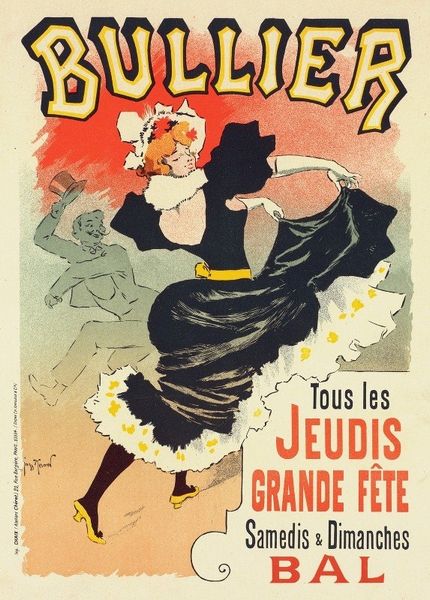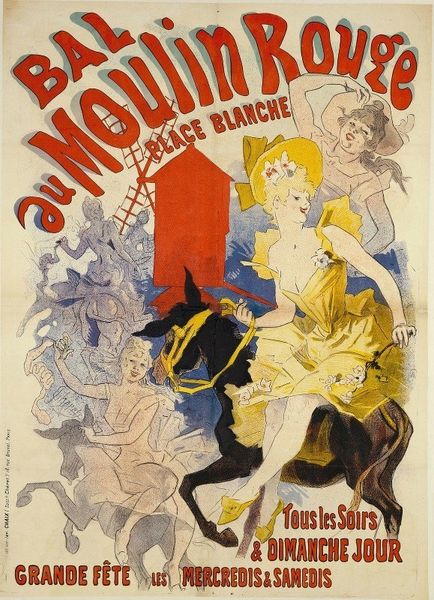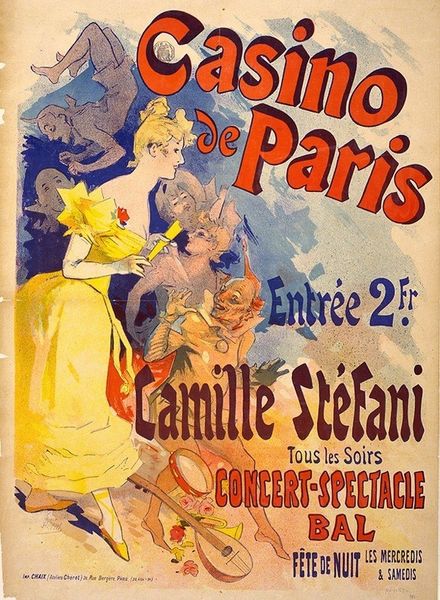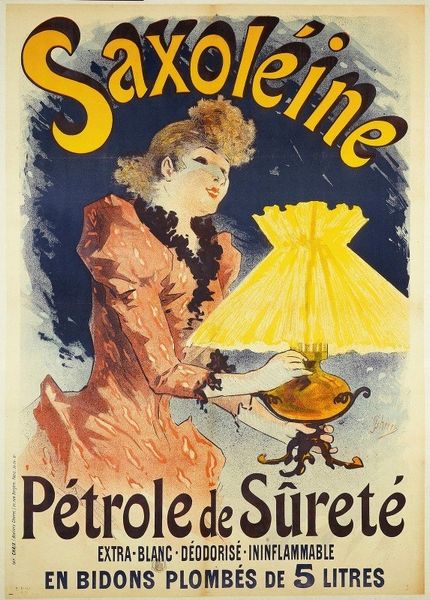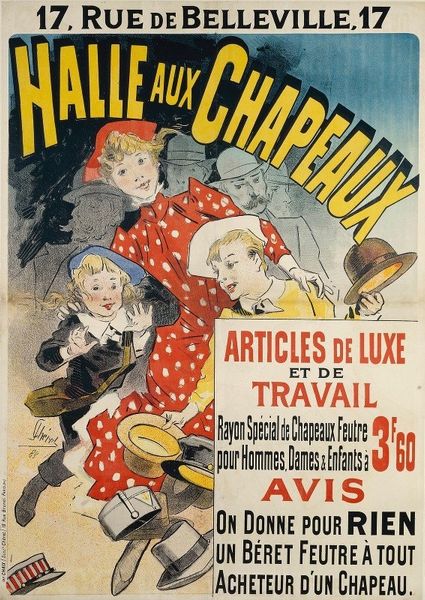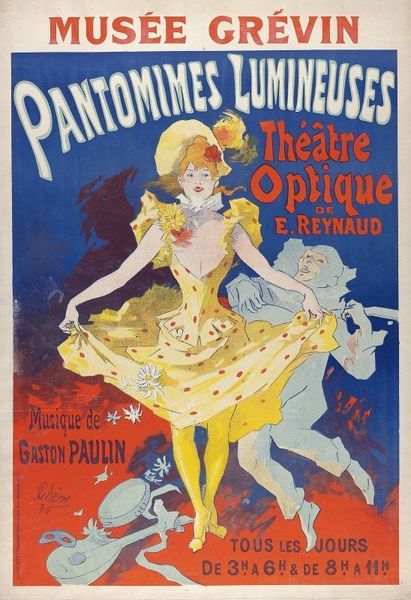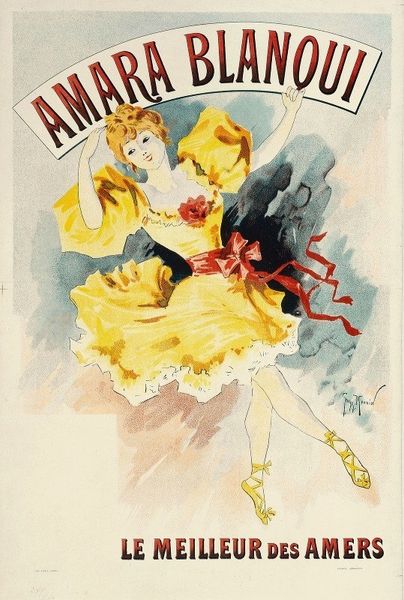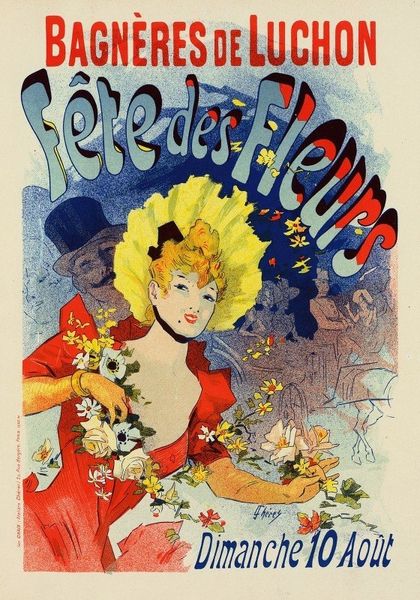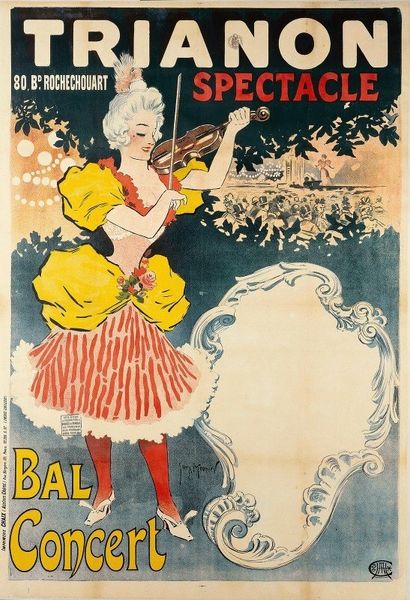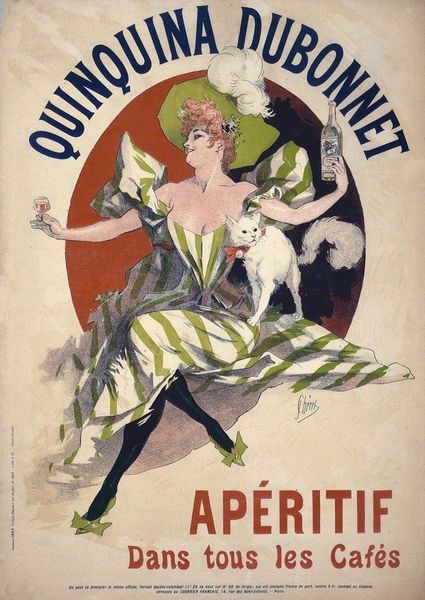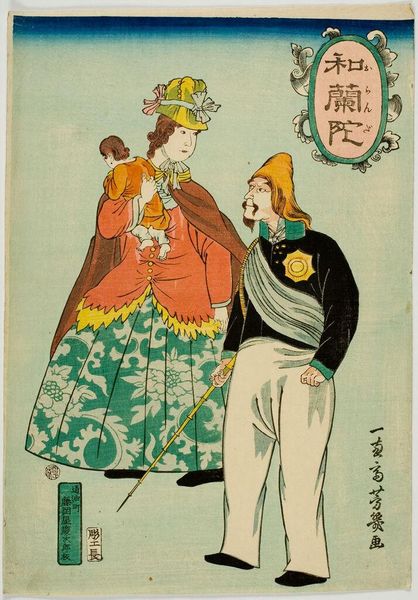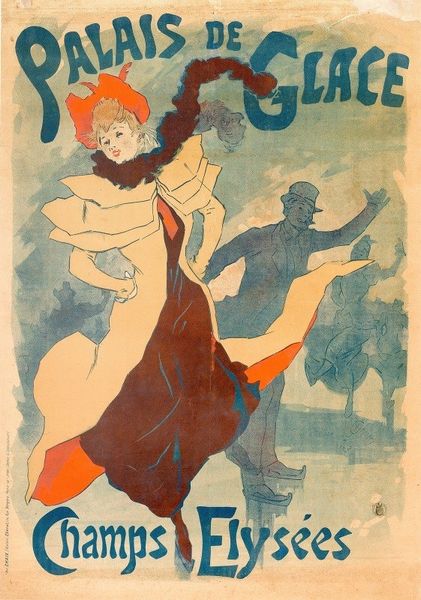
lithograph, poster
#
art-nouveau
#
lithograph
#
figuration
#
poster
Copyright: Public Domain: Artvee
Curator: Jules Chéret’s 1893 lithograph, "The Aura of Noon," advertises "L'Aureole du Midi" petrol. The medium itself is key: Chéret pioneered using chromolithography for mass-produced posters. Editor: My initial thought is of pure joie de vivre! It’s quite ebullient. Look at the vibrant reds and blues, and that sense of dynamic movement – very characteristic of its time. I see it as representative of changing gender dynamics in Parisian culture. Curator: Precisely! Note the central figure – a woman playfully lifting a burning lamp. The choice of petrol and the poster format would indicate that these objects are rapidly entering homes and therefore transforming the roles of women domestically and increasingly also in the public imagination as a mass produced lithograph is consumed en masse. Editor: Absolutely, there’s also this charming child at her side holding a petrol tin. One wonders about the target demographic for Chéret's posters and their aspirations: How might the idealized vision of domestic life reflected in posters of the Belle Epoque speak to women navigating industrial change and expanding social freedoms? Curator: Chéret ran his own lithography shop. It would be fascinating to explore production capacity and labour within his workshop—and consider the types of people he employed. The mechanisation implied by petrol use is reinforced by his poster-printing method. He wanted the image to feel spontaneous but it was reliant on the machine to produce. Editor: His imagery speaks to themes of consumerism, leisure, and the burgeoning concept of modern identity at the turn of the century, no doubt shaped and mediated by socio-economic conditions and class differences. Curator: His success underscores how innovative techniques like three-stone lithography allowed for commercial images to be produced en masse for rapid urban consumption, and indeed it would also be relevant to compare these images with other material advertising strategies for illuminating oils. Editor: It's interesting how Chéret weaves together industry and an almost pastoral carefree scene, it offers insight into how rapidly perceptions around the relationship between technological advancement, social values, and artistic expression were also rapidly shifting at the end of the nineteenth century. Curator: Indeed, a critical turn towards machine-made commodities also informs an alternative discourse rooted in fine craft and art. The contrast illuminates a period grappling with both excitement and anxiety of industrialized production processes. Editor: Considering it's essentially an advertisement, the artistry invites reflection on the evolving dynamics between marketing and consumer culture during the late 19th century. Curator: Right. Reflecting on materiality helps bridge production conditions and evolving consumption desires to examine their interconnected impacts on contemporary societies.
Comments
No comments
Be the first to comment and join the conversation on the ultimate creative platform.
